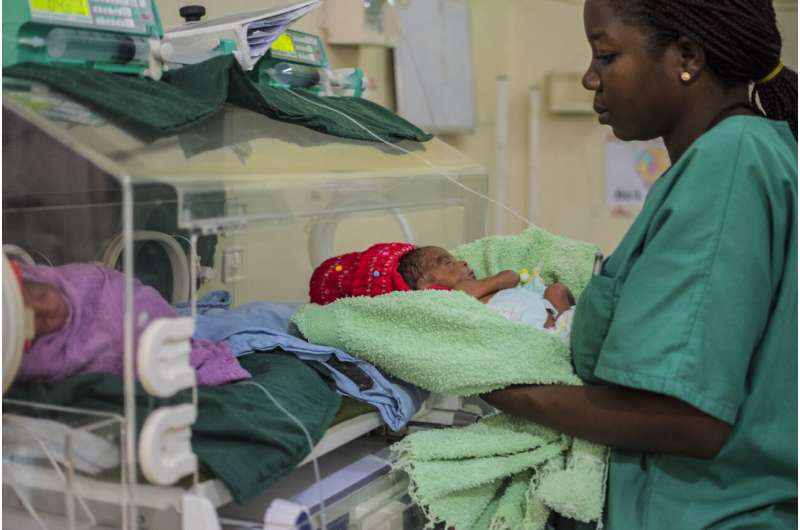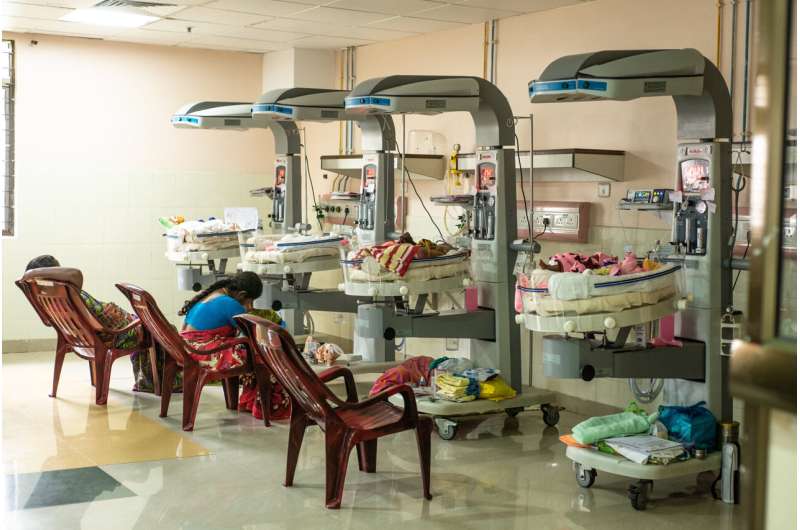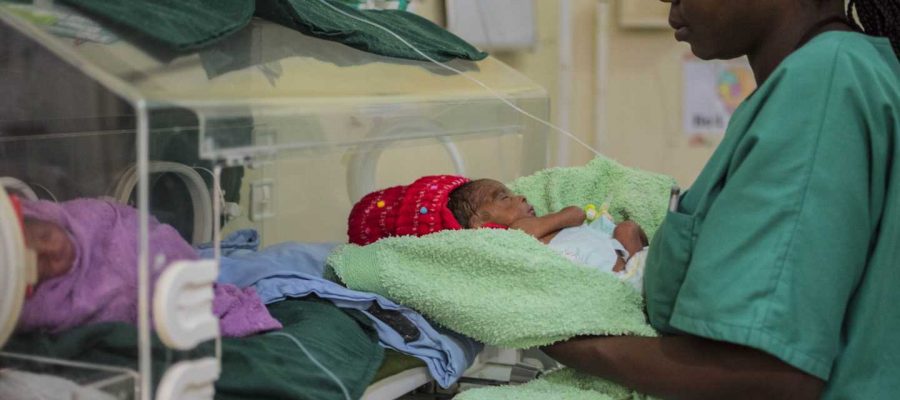
A UCL (University College London) global observational study, which involved more than 3,200 newborn babies suffering from sepsis in 19 hospitals in 11 countries, has shown that many newborns are dying because the antibiotics used to treat sepsis are losing their effectiveness.
The study, conducted from 2018 to 2020, found there was high mortality among infants with culture-positive sepsis (almost 1 in 5 across the hospital sites), and a significant burden of antibiotic resistance. The study has provided a wealth of high-quality data aimed at improving the treatment of newborn babies with sepsis.
The findings of the observational study have been published in a paper in PLOS Medicine that was co-authored by a global team of over 80 researchers spanning four continents.
The study was conducted by the Global Antibiotic Research and Development Partnership (GARDP) in collaboration with the Medical Research Council Clinical Trials Unit at UCL, whose research team led in analyzing the data; St George’s, University of London (SGUL); Penta—Child Health Research; and the University of Antwerp.
“It was very important to undertake this study to get a better understanding of the kind of infections we’re seeing in newborns in hospitals, the bugs causing them, the treatments that are being used and why we are seeing more deaths. The study has given us vital information which will help us to better design clinical trials and ultimately improve the care and outcome of babies with neonatal sepsis,” said Manica Balasegaram, Executive Director of GARDP.
Sepsis is a life-threatening bloodstream infection that affects up to 3 million babies a year globally. Every year, 214,000 newborn babies, mostly in low- and middle-income countries (LMICs), die of sepsis that has become resistant to antibiotics. Newborn babies are particularly at risk of severe infection because of their underdeveloped immune systems.
Findings
There was extensive variation in mortality among the 19 hospitals in the study, ranging from 1.6% to 27.3%, with markedly higher rates in LMICs. Leading clinicians in hospitals in Bangladesh, Brazil, China, Greece, India, Italy, Kenya, South Africa, Thailand, Vietnam and Uganda took part in the study.
“The study exposed the glaring reality of antibiotic-resistant infections, especially in hospitals in LMICs, where we are often faced with a shortage of nurses, beds and space. The risk of infections is very high and most infections are resistant to antibiotics. If an antibiotic doesn’t work, the baby often dies. This urgently needs to change. We need antibiotics that will cover all bacterial infections,” said Sithembiso Velaphi, head of pediatrics at Chris Hani Baragwanath Academic Hospital in Johannesburg, South Africa.
The study highlights a worryingly wide variation in treatment. More than 200 different antibiotic combinations were used by hospitals in the study, with frequent switching of antibiotics due to high resistance to treatments.
Many physicians were forced to use antibiotics such as carbapenems due to the high degree of antibiotic resistance to the recommended treatments in their units. These are classified by the World Health Organization as “Watch” antibiotics. They are recommended only for specific, limited indications as they need to be preserved. However, these were often the only antibiotics available to treat the infection.
Last-line antibiotics were prescribed to 15% of babies with neonatal sepsis enrolled in the study. Klebsiella pneumoniae was the most common pathogen isolated. It is usually associated with hospital-acquired infections.

Future steps to improve treatment and survival
Using the data collected, the team developed two tools that could be used in clinical trials and in any neonatal intensive care unit worldwide. The NeoSep Severity Score, based on 10 clinical signs and symptoms, could be used by clinicians to identify newborns who have a high risk of dying, and ensure they get special attention more quickly. The NeoSep Recovery Score uses many of the same clinical signs and symptoms and could provide clinicians with key information on whether to escalate treatment.
“The observational study has been instrumental in providing the high-quality data that we need to design trials of appropriate treatments for sepsis in newborn babies. It has been a huge collaborative effort by researchers and clinicians in Africa, Asia, Latin America and Europe,” said Neal Russell, Principal Investigator for the neonatal sepsis study at SGUL.
The study also aims to inform WHO guidelines on treatment for newborn babies with sepsis.
“Organisms evolve, drug resistance changes; that is why clinical guidelines for neonatal sepsis need constant adaptation. Updating guidelines relies on recent and good evidence, so this observational study is a significant step towards better treatment,” said Wolfgang Stöhr, statistician for the observational study at the MRC Clinical Trials Unit at UCL.
The results of the study have been used to design a pivotal strategic public health clinical trial to find better treatments for newborn infections in the context of increasing resistance to existing treatments.
The neonatal sepsis trial (NeoSep1) is led by GARDP together with SGUL and the MRC CTU at UCL and is being conducted at Chris Hani Baragwanath Academic Hospital in Soweto, Johannesburg, Tygerberg Hospital in Cape Town and Kilifi County Hospital in Kenya. The trial will also look at appropriate formulations and dosages for newborn babies. The trial will be expanded to other countries and regions from 2024, with a target of recruiting up to 3,000 newborns overall.
“Work in formulation and dose appropriateness is imperative. Children are not small adults. Drugs must be formulated to meet their needs in a safe and effective manner,” said Alessandra Nardone, Clinical Project Manager at Penta—Child Health Research.
The new trial will benefit from vital laboratory work carried out during the observational study.
“The Laboratory of Medical Microbiology (LMM LAB-Net) functioned as the central laboratory, supporting local lab analysis for the observational study. We also performed an in-depth molecular analysis on the collected pathogens. Together, these results provide valuable information for the NeoSep1 trial,” said Surbhi Malhotra-Kumar, head of the Laboratory of Medical Microbiology at the University of Antwerp.
More information:
Neal J. Russell et al, Patterns of antibiotic use, pathogens, and prediction of mortality in hospitalized neonates and young infants with sepsis: A global neonatal sepsis observational cohort study (NeoOBS), PLOS Medicine (2023). DOI: 10.1371/journal.pmed.1004179
Journal information:
PLoS Medicine
Source: Read Full Article
